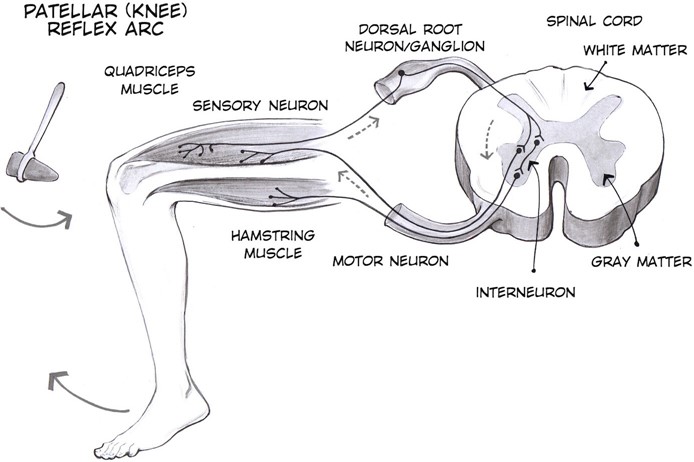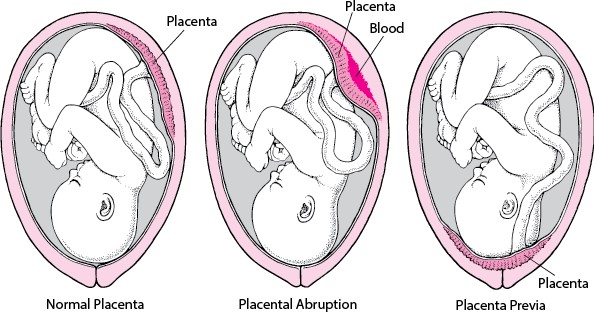A woman is being treated for preterm labor with magnesium sulfate. Which finding by the nurse indicates magnesium sulfate toxicity?
Select one:
Respiratory rate of 16.
Complaints by the client of feeling flushed and warm.
Fetal heart rate of 120.
Patellar reflexes are absent.
The Correct Answer is D
Choice A Reason: Respiratory rate of 16. This is an incorrect answer that indicates a normal finding that does not suggest magnesium sulfate toxicity. Respiratory rate is a measure of the number of breaths per minute, which reflects the respiratory function and oxygenation status. Respiratory rate of 16 is within the normal range for adults, which is 12 to 20 breaths per minute. Respiratory rate of 16 does not indicate magnesium sulfate toxicity, which can cause respiratory rate below 12 breaths per minute.
Choice B Reason: Complaints by the client of feeling flushed and warm. This is an incorrect answer that indicates a common side effect that does not indicate magnesium sulfate toxicity. Feeling flushed and warm are sensations that are caused by vasodilation (widening of blood vessels), which can occur as a result of magnesium sulfate administration. Feeling flushed and warm are not signs of magnesium sulfate toxicity, but rather expected and mild reactions that usually subside within a few hours.
Choice C Reason: Fetal heart rate of 120. This is an incorrect answer that indicates a normal finding that does not suggest magnesium sulfate toxicity. Fetal heart rate is a measure of the number of beats per minute of the fetal heart, which reflects the fetal well-being and oxygenation status. Fetal heart rate of 120 is within the normal range for fetuses, which is 110 to 160 beats per minute. Fetal heart rate of 120 does not indicate magnesium sulfate toxicity, which can cause fetal heart rate below 110 beats per minute or above 160 beats per minute.
Choice D Reason: Patellar reflexes are absent. This is because absent patellar reflexes are a sign of magnesium sulfate toxicity, which is a condition where the level of magnesium in the blood is too high, which can cause adverse effects on the neuromuscular and cardiovascular systems. Magnesium sulfate is a medication that is used to prevent or treat preterm labor, which is labor that occurs before 37 weeks of gestation. Magnesium sulfate works by relaxing the uterine muscles and inhibiting uterine contractions. However, magnesium sulfate can also affect other muscles and nerves in the body, and cause symptoms such as muscle weakness, respiratory depression, hypotension, or cardiac arrest.

Nursing Test Bank
Naxlex Comprehensive Predictor Exams
Related Questions
Correct Answer is C
Explanation
Choice A Reason: Macrosomic newborn. This is a correct answer that describes a possible complication of post-term pregnancy. A macrosomic newborn is a newborn that weighs more than 4000 grams or 8 pounds 13 ounces at birth. It can occur in post-term pregnancies due to prolonged exposure to maternal glucose and insulin. It can increase the risk of birth injuries, shoulder dystocia, cesarean delivery, and hypoglycemia.
Choice B Reason: Intrauterine growth restriction (IUGR). This is a correct answer that indicates a potential problem of post-term pregnancy. IUGR is a condition where the fetal growth is slower than expected for gestational age. It can occur in post-term pregnancies due to placental insufficiency, aging, or calcification, which can impair nutrient and oxygen delivery to the fetus. It can increase the risk of fetal distress, hypoxia, acidosis, and stillbirth.
Choice C Reason: Umbilical cord prolapse. This is an incorrect answer that does not reflect a risk of post-term pregnancy, but rather a risk of other factors such as prematurity, low birth weight, breech presentation, multiple gestation, polyhydramnios, or artificial rupture of membranes.
Choice D Reason: Meconium Aspiration Syndrome (MAS). This is a correct answer that denotes a possible complication of post-term pregnancy. MAS occurs when fetal stool (meconium) enters into the lungs before or during birth, causing airway obstruction, inflammation, and infection. MAS usually affects term or post-term infants who experience fetal distress or hypoxia in utero. It can cause respiratory distress syndrome (RDS), persistent pulmonary hypertension (PPHN), or chronic lung disease (CLD).
Correct Answer is B
Explanation
Choice A Reason: Shoulder dystocia. This is an incorrect answer that describes a different obstetric complication. Shoulder dystocia is a condition where the baby's shoulder gets stuck behind the mother's pubic bone during delivery, which can cause nerve injury, fracture, or asphyxia to the baby. Shoulder dystocia does not cause fetal bradycardia, abdominal pain, or vaginal bleeding.
Choice B Reason: Placental abruption. This is a correct answer that explains the symptoms of fetal bradycardia, abdominal pain, and vaginal bleeding in a woman with a history of crack cocaine use. Placental abruption. This is because placental abruption is a condition where the placenta separates from the uterine wall before delivery, which can cause fetal distress, maternal hemorrhage, and shock. Placental abruption can be triggered by maternal hypertension, trauma, or substance abuse, such as crack cocaine.
Choice C Reason: Anaphylactoid syndrome of pregnancy. This is an incorrect answer that refers to a rare and fatal condition also known as amniotic fluid embolism. Anaphylactoid syndrome of pregnancy is a condition where amniotic fluid enters into the maternal bloodstream and causes an allergic reaction, which can lead to respiratory failure, cardiac arrest, coagulopathy, and coma. Anaphylactoid syndrome of pregnancy does not cause fetal bradycardia or vaginal bleeding.
Choice D Reason: Placenta previa. This is an incorrect answer that indicates another placental disorder. Placenta previa is a condition where the placenta covers or is near the cervix, which can cause painless bright red bleeding during pregnancy or labor. Placenta previa does not cause fetal bradycardia or abdominal pain.

Whether you are a student looking to ace your exams or a practicing nurse seeking to enhance your expertise , our nursing education contents will empower you with the confidence and competence to make a difference in the lives of patients and become a respected leader in the healthcare field.
Visit Naxlex, invest in your future and unlock endless possibilities with our unparalleled nursing education contents today
Report Wrong Answer on the Current Question
Do you disagree with the answer? If yes, what is your expected answer? Explain.
Kindly be descriptive with the issue you are facing.
